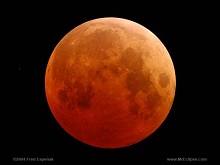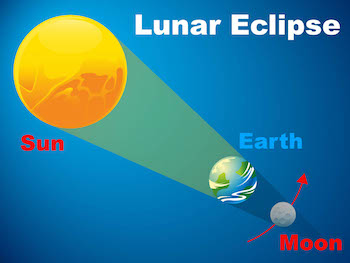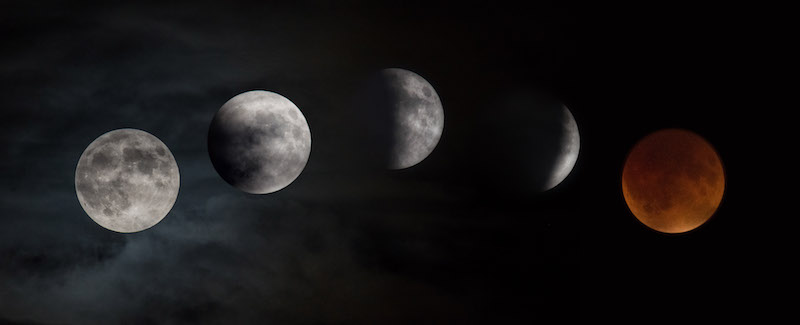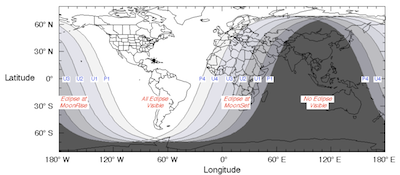
Join AWB celebrate our moon as a total lunar eclipse graces the skies of the entire Western Hemisphere on January 20-21. Skywatchers across North and Central America will see the full Moon glide into the Earth's shadow and turn orange-red during the evening hours of the 20th, while observers in South America, western Europe and Africa will witness the lunar disappearing spectacle in the pre-dawn hours of the 21st.
 Lunar eclipses occur when the sun, Earth, and moon line up and the Earth’s shadow is cast on the moon’s disk. During totality, the moon passes through the dark shadow cone of the Earth, known as the umbra and appears a shade of ‘blood red’. This stunning coloration occur as sunlight travels through Earth’s own dust filled air, resulting in the Moon glowing reddish – the same reason we see the sun turn red during sunsets. The Moon's color can vary significantly from one eclipse to the next and its exact color can vary from one eclipse to the next depending on the amount of particles in our planet’s atmosphere.
Lunar eclipses occur when the sun, Earth, and moon line up and the Earth’s shadow is cast on the moon’s disk. During totality, the moon passes through the dark shadow cone of the Earth, known as the umbra and appears a shade of ‘blood red’. This stunning coloration occur as sunlight travels through Earth’s own dust filled air, resulting in the Moon glowing reddish – the same reason we see the sun turn red during sunsets. The Moon's color can vary significantly from one eclipse to the next and its exact color can vary from one eclipse to the next depending on the amount of particles in our planet’s atmosphere.
The Super Moon Phenomenon
While all lunar eclipses are beautiful and entrancing, this one will appear to be a little grander than usual. The moon will be at its perigee (closest to the Earth), making it seem a bit larger in the sky, a phenomenon some media refer to as a "Super Moon." This will be the first of three full supermoons in a row over the next three months until March.
Also worth noting is that this month’s full moon is known as the Wolf Moon by some northern cultures since this is the time of year when wolves howl as their breeding season begins. Hence the media’s over-dramatic naming of this event as the Super Wolf Blood Moon.







 Lunar eclipses occur when the sun, Earth, and moon line up and the Earth’s shadow is cast on the moon’s disk. During totality, the moon passes through the dark shadow cone of the Earth, known as the umbra and appears a shade of ‘blood red’. This stunning coloration occur as sunlight travels through Earth’s own dust filled air, resulting in the Moon glowing reddish – the same reason we see the sun turn red during sunsets. The Moon's color can vary significantly from one eclipse to the next and its exact color can vary from one eclipse to the next depending on the amount of particles in our planet’s atmosphere.
Lunar eclipses occur when the sun, Earth, and moon line up and the Earth’s shadow is cast on the moon’s disk. During totality, the moon passes through the dark shadow cone of the Earth, known as the umbra and appears a shade of ‘blood red’. This stunning coloration occur as sunlight travels through Earth’s own dust filled air, resulting in the Moon glowing reddish – the same reason we see the sun turn red during sunsets. The Moon's color can vary significantly from one eclipse to the next and its exact color can vary from one eclipse to the next depending on the amount of particles in our planet’s atmosphere. Click on image for a pdf version.
Click on image for a pdf version.